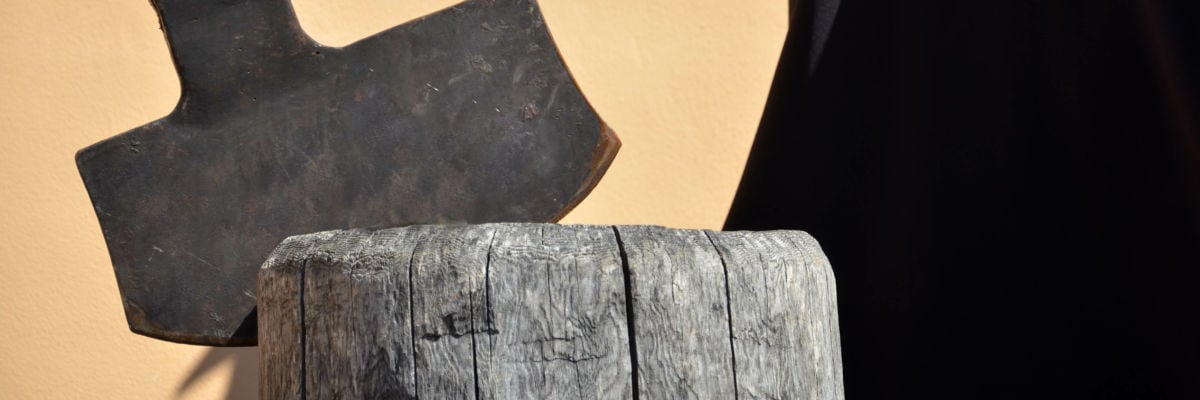
This past weekend was the fifty-fifth anniversary of the canonization of the Forty Martyrs of England and Wales by Pope St. Paul VI, more than 435 years after the first martyrs suffered on May 4, 1535.
Why such a delay? And what do the martyrs teach us today about the Reformation era and the modern ecumenical era? Looking back at the history of their martyrdoms and the progress of their cause for canonization provides some answers.
The Forty Martyrs of England and Wales, canonized on October 25, 1970, are a group of men and women, priests and laity, who suffered and died for the Catholic faith in the sixteenth and seventeenth centuries (1535-1679).
The first martyrs were hanged, drawn, and quartered during the reign of Henry VIII; the last martyrs were executed during a wave of anti-Catholic hysteria during the reign of Charles II. They were accused under different laws and for different reasons: for refusing to swear to the spiritual authority of the monarch, being priests in England when it was an act of treason, aiding and abetting priests, attending Mass, celebrating Mass, or all manner of other grave accusations.
Their sufferings and deaths were known in the Catholic community at the time: Reginald Cardinal Pole, the son of a beatified martyr (Margaret Pole), expressed his horror at the martyrdoms of Thomas More; John Fisher; and the first martyrs in this group, the Carthusians John Houghton, Augustine Webster, and Robert Lawrence. Saint Philip Neri hailed the missionary priests leaving the Venerable English College in Rome by saying, “Salvete flores martyrum” (Hail! flowers of the martyrs) in the 1580s as depictions of the martyrs’ sufferings decorated the walls of the chapel in that college. One of the last vicars apostolic of the Penal era, Bishop Richard Challoner, collected the stories of the martyrs in 1741 in Memoirs of Missionary Priests and other Catholicks of both Sexes who suffered Death or Imprisonment in England on account of their Religion, from the year 1577 till the end of the reign of Charles II.
None of the martyrs of the English Reformation era—not even Thomas More and John Fisher—was even beatified until late in the nineteenth century. The first cause did not begin until 1874, almost a quarter-century after the hierarchy was re-established in England by Pope Pius IX. His successor Pope Leo XIII beatified fifty-four in 1886 and nine more in 1895. Pope Pius XI beatified 136 more in 1929 and canonized Fisher and More on May 19, 1935.
The selection of the Forty Martyrs was presented in 1960 and approved in 1961: they were chosen on the basis of their popularity and the devotion shown to them in England and Wales. Miracles attributed to their intercession were investigated and documented (Pius XI had canonized More and Fisher equipollently without verification of medical miracles); their canonization was announced by Pope Paul VI and approved by the hierarchy present at the consistory of May 18, 1970.
There was one delicate issue: the relationship between the Catholic Church and the Church of England. Representatives had met in Malta and organized the Anglican-Roman Catholic International Commission (ARCIC) for ecumenical discussions. Unitatis Redintegratio, the Decree on Ecumenism of the Second Vatican Council, had singled out the Church of England (“Among those in which Catholic traditions and institutions in part continue to exist, the Anglican Communion occupies a special place,” Chapter III, paragraph 13). Michael Ramsey, the archbishop of Canterbury, and Pope Paul VI had met several times, and the pope in 1966 had given Ramsey a ring that he was wearing—an extraordinary gesture.
So this canonization of forty martyrs could have been detrimental to the progress in unity the Catholic Church and Anglicans were striving for. The postulator for the cause, Paolo Molinari, S.J., emphasized the point:
From the ecumenical point of view, it is extremely important to realize the fact, proved historical, that the martyrs were not put to death as a result of internal struggles between Catholics and Anglicans, but precisely because they were not willing to submit to a claim of the State which is commonly recognized today as being illegitimate and unacceptable [forcing religious compliance and church attendance].
In their day, the martyrs were breaking the laws passed by Parliament and approved by the monarchs by practicing the Catholic faith, but they were often offered freedom and their lives if they abjured their faith and attended Anglican services. The bishops of England who were the postulators of their cause were careful not to select as martyrs anyone who had any connection with conspiracies against the reigning monarchs.
Nevertheless, Michael Ramsey did not accept the invitation to attend their canonization on October 25, 1970. In contrast, notice that King Charles III, representing his mother Queen Elizabeth II as the Prince of Wales in 2019, attended Saint John Henry Newman’s canonization—and even praised him as a great Englishman.
In England the Feast of the Martyrs of England and Wales is celebrated on May 4, the anniversary of the Protomartyrs’ executions. In Wales, the Feast of the Welsh Martyrs and English Companions is celebrated on October 25. Throughout England and Wales, there are churches named for them, individually and collectively, and pilgrimages to shrines. The Tyburn Convent, near the site of many of the executions, promotes devotion to them and houses some of their relics.
Their feasts are not on the sanctoral calendar of the United States Conference of Catholic Bishops, but the Anglican Ordinariate of the Chair of St. Peter celebrates the May 4 feast as a Memorial.
Their stories have been told and retold to offer models of fidelity and bravery, enduring torture and excruciating executions. They risked everything for the celebration of the sacraments, the unity of the Church under the vicar of Christ, and the fullness of Catholic doctrine. Just a few examples:
The three laywomen, Margaret Clitherow, Anne Line, and Margaret Ward, protected missionary priests in their homes and in prison. Clitherow was crushed to death under a heavy door with a sharp stone beneath her back. She could have entered a plea that could endanger her family after having priests celebrate Mass in her home in York, but she refused. Anne Line kept a safe-house for priests in London and helped the celebrating priest escape when the house was raided on the Feast of the Presentation. She was hanged, proclaiming that she wished she could have saved even more priests. Margaret Ward helped a priest escape from prison and refused under torture to reveal his location. She was also hanged.
The Protomartyrs, Houghton, Lawrence, Reynolds, and Webster, all wanted to please King Henry VIII and his marital ambitions, but they could not accept his claim to replace the vicar of Christ in their country. The Carthusians celebrated a votive Mass of the Holy Spirit and knew they could not take the Oath of Supremacy. When the executioner cut open his chest, through his hair shirt, to remove his heart, Houghton cried out, “Jesu, what will you do with my heart?”
St. Edmund Campion had published a book, Decem Rationes (Ten Reasons), in which he defended Catholic doctrines and offered arguments against Protestant dissent. After he was captured and tortured on the rack, he debated several Anglican theologians, not allowed any books or resources, and not permitted to ask any questions, only to answer them. It’s usually thought that he won the debates, because they stopped after a few sessions. That was enough for Philip Howard, the earl of Arundel, to return to the Catholic Church.
In the civilized West, we aren’t in danger of such persecution now, although we see signs of soft persecution around us: lawsuits and discrimination, prosecutions of FACE violations, rejection as foster or adoptive parents, etc. The issues are different (the defense of marriage as between one man and one woman, protection of the lives of the unborn, defense of the seal of the confessional, the very fact that there are two sexes), and the methods are according to a fairer judicial system (innocent until proven guilty, the burden of proof on the prosecution, appeals to higher Courts). But the Forty Martyrs of England and Wales offer examples of what it takes to stand up for the Faith, the courage and the love we need every day to persevere in God’s grace. Devotion to them and knowledge of their stories challenge and prepare us.
Forty Martyrs of England and Wales, pray for us!
Who Are the Forty Martyrs of England and Wales?
Among the Forty Martyrs, there are
Thirteen secular priests: John Almond (1612), John Boste (1594), Edward Gennings (1591), John Kemble (1679), Luke Kirby (1582), John Lloyd (1679), Cuthbert Mayne (1577), John Payne (1582), Polydore Plasden (1591), John Plessington, (1679), Ralph Sherwin (1581), John Southworth (1654), and Eustace White (1591)
Ten Jesuits: Edmund Arrowsmith (1628), Alexander Briant and Edmund Campion (1581), Philip Evans (1679), Thomas Garnet (1606), David Lewis (1679), Henry Morse (1645), Nicholas Owen (1606), Robert Southwell (1595), Henry Walpole (1595)
Three Benedictines: Ambrose Edward Barlow (1641), John Roberts (1610), Alban Bartholomew Roe (1642)
Three Carthusians (the Protomartyrs): John Houghton, Robert Lawrence, and Augustine Webster (1535)
Two Franciscans: John Griffith, alias Jones (1598), John Wall (1679)
One Brigittine: Richard Reynolds (Protomartyr; 1535)
One Augustinian: John Stone (1539)
Seven laymen and women: Margaret Clitherow (1586), Richard Gwyn (1584), Philip Howard (1595), Anne Line (1601), John Rigby (1600), Margaret Ward (1588), Swithun Wells (1591)



